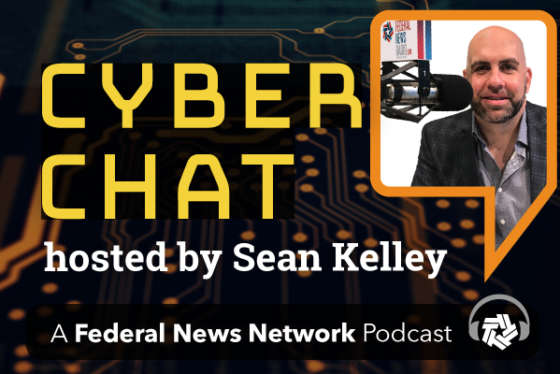Hubbard Radio Washington DC, LLC. All rights reserved. This website is not intended for users located within the European Economic Area.
On Air: Federal News Network
CYBER CHAT

FRIDAYS at 10:30 A.M.
A monthly show featuring interviews with experts in IT and Information Security discussing the latest trends and hottest cyber topics and challenges impacting the federal community. Follow Sean on Twitter. Subscribe on Apple Podcasts or Podcast One.


Crisis communication with advent of digital and social revolution
On this episode of CyberChat, host Sean Kelley, former EPA CISO and former Veterans Affairs Department deputy CIO, explores the challenges and techniques organi...
Sean Kelley
In today’s digitally connected world, consumers are constantly bombarded with sensational headlines via a multitude of media outlets. From political scandals to corporate breaches, the 24-hour news cycle has been turned into a nanosecond news cycle. In such an overstimulated world, the need for organizations to be prepared for crisis communication and brand management is great. And when it comes to cyber breaches, the time is now.
On this episode of CyberChat, host Sean Kelley, former EPA CISO and former Veterans Affairs Department deputy CIO, explores the challenges and techniques organizations can utilize during crisis management. He’s joined by Jeff Hunt, author of “Brand Under Fire” and Tim Cox, acting director of IT strategic communications at VA’s Office of Information and Technology.
Every organization is vulnerable to crisis. Breaches will occur, operational processes will break down and the impact will be financial and reputational. When faced with crisis, Hunt said there are six stages organizations go through:
Are agencies getting enough bang for their cyber buck? See how tech leaders feel about the state of their organization and budgets in our new survey, sponsored by Axonius.
1. Surprise
2. Insufficient Information
3. Paralysis
4. Escalating Flow of Events
5. Siege Mentality
6. Bunker Down Mode
“Organizations should be really focused on proactive storytelling,” which Cox said means telling their story before and better than anyone else.
“When crisis occurs, there is a natural vacuum that gets created and the vacuum gets filled. The vacuum gets filled by the organization or others” Hunt said. When developing your story or message, organizations should keep in mind that “consumers are always looking for a villain, a victim, a hero and moral to the story. The organization’s ability to make sure they don’t let themselves get slid into the villain role will save them and their reputation,” Hunt said.
Hunt recommended concrete steps on how organizations should ensure they practice more effective crisis management so they are not portrayed as the villain:
• Authenticity
• Transparency
• Speed
• Agility
• Creativity
Cox said preparing for a crisis is key. “You don’t draft your plan the morning the crisis happens; you have to have it prepared in advance. You identify your channels, your spokespeople and socialize your plan.” Hunt said most organizations aren’t there yet. “As much as I’d like to hope and wish that more organizations are doing vulnerability analysis, or preparing for either eight or ten top vulnerabilities or doing simulations, the sad fact is that it’s not happening.”
Both Cox and Hunt agreed organizations should create a dark site where digital content should be housed for future emergencies.
Quite often during a crisis, organizations actually don’t practice listening to consumers to ensure the message is being delivered or understood. Actively listening will enable organizations to realign, reshape and redeploy the message as necessary. Cox said VA utilizes metrics to evaluate the effectiveness of a message and as a result, VA has seen their trust scores increase.
Read more: CyberChat
The top takeaways:
1. Organizations go through six stages when faced with a crisis
2. Proactive storytelling can lessen the effect of a crisis.
3. Five key principles can ensure organizations don’t become the villain.
4. Have content ready and available in a dark site.
5. Most organizations aren’t actively planning for crisis.
6. Practice active listening to ensure message is being consumed as intended.
Copyright © 2024 Federal News Network. All rights reserved. This website is not intended for users located within the European Economic Area.
Related Stories
Rep. Hurd champions modernizing federal cybersecurity
Medical device security: An ever-evolving and ever-challenging concern
Who should use the NIST Cybersecurity Framework?